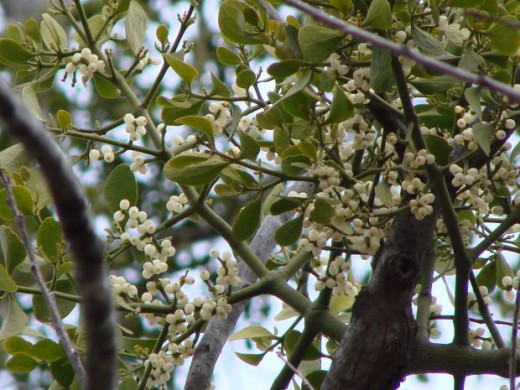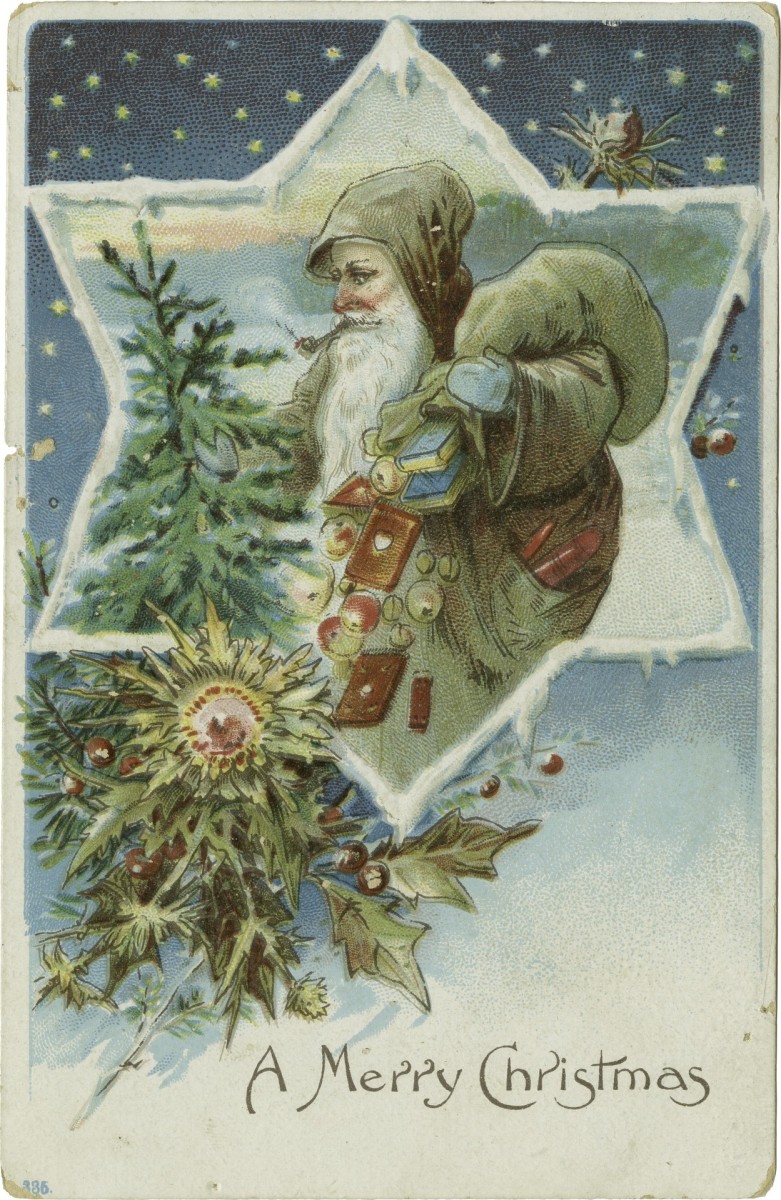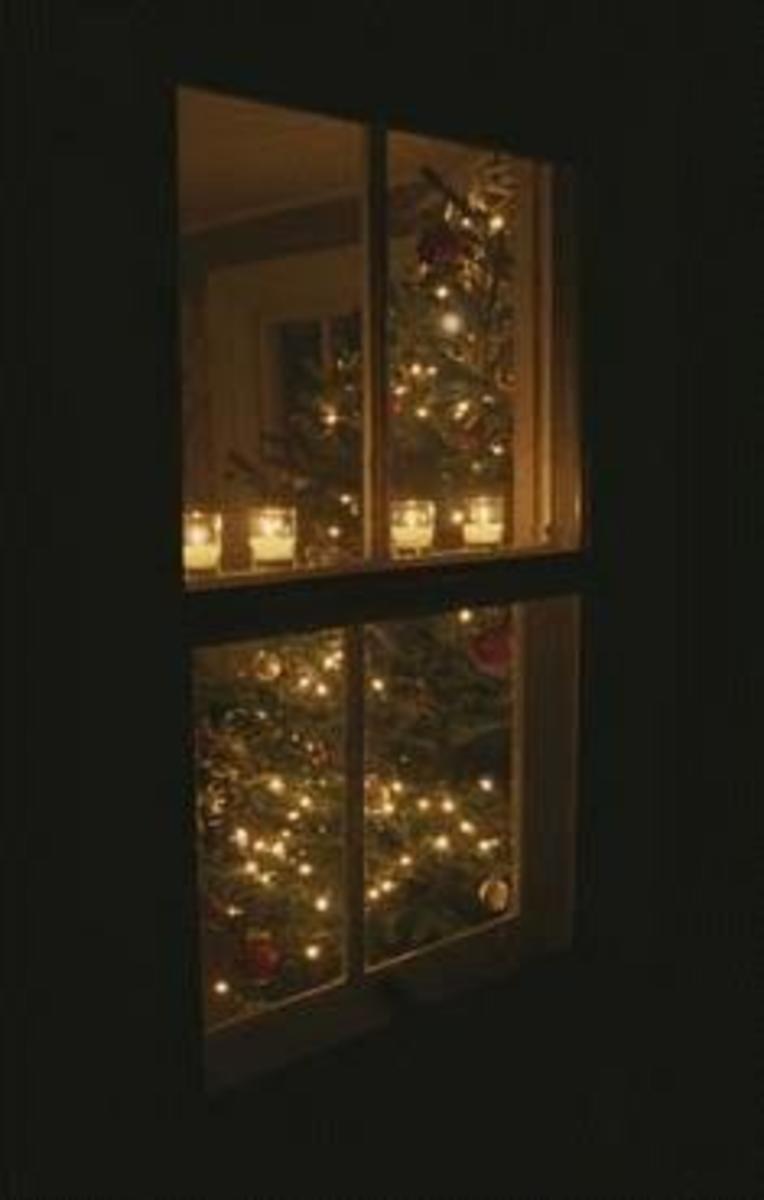The Tradition of Mistletoe At Christmas

Have you ever kissed under the mistletoe during the Festive Season? At Christmas it has long been a tradition to bring armfuls of evergreens, such as mistletoe and holly, into our homes and decorate with them. Not only do we bring them into our homes, but they have become so popular that their images now adorn Christmas cards, festive tableware, crackers and all types of festive gifts.
This evergreen is an especial favourite to hang up for decoration, mainly due to the very popular custom of kissing under the mistletoe during the festive season. But where did these traditions start and how long ago did the customs start?
So what exactly is it? There are several species of mistletoe and the species that grows in Europe is called Viscum album or European or Common Mistletoe. It is a semi-parasitic shrub that has evergreen leaves, small yellow flowers and poisonous, sticky white berries. The poison in the berries can cause stomach pains and other gastrointestinal problems such as diarrhoea if ingested.
Most of the seeds are spread by birds, such as the Mistle Thrush, who leave their faeces on the trunks of trees where the seeds then sprout using the tree for water and nutrients, though the mistletoe is capable of photosynthesizing what it needs to survive. As it grows it can reduce the growth of its host tree or, if the infestation is heavy enough, could even kill it. It is commonly found growing on apple trees and much more rarely on oak trees.
Origins of Customs Involving Mistletoe
As early as the time of the ancient Greeks, it was regarded as a plant that had mystical qualities, being a protector against poison, an aphrodisiac and was said to bestow fertility and life. The rarer mistletoe that was found growing on oak trees was highly prized and venerated by the Druid priests of the ancient Celts, who used it in their religious ceremonies.
The Celts believed that the evergreen could arrive on a tree in a bolt of lightning. The Druid priests would cut it down with a golden sickle, spreading a white cloth so that none could fall on the floor and lose its powers, and then sacrifice two white bulls, praying that those who were given the mistletoe would be granted abundance and prosperity.
It was regarded as a symbol of sexuality and was seen as the soul of the oak tree, and later in Celtic history the cutting of the mistletoe came to be seen as a representation of the emasculation of the Old King by his younger and more vigorous successor. The Celts gathered it at both the summer and winter solstices, a custom which survived into later times as the tradition of bringing mistletoe into the home at Christmas.
Do you hang mistletoe at Christmas?
In Scandinavian Legend
In Scandinavian legend, it was venerated as the sacred plant of the goddess of love Frigg who was the wife of Odin and queen of Asgard. Her son Baldr was the god of the summer sun and he had a premonition in his sleep that he would die, which would bring to an end all the life on earth. Frigg was greatly alarmed by his dreams and went all over the earth extracting promises that nothing would ever, ever hurt her son.
However, Frigg had overlooked one plant in her quest to secure Baldr’s safety, which was the mistletoe. The evil god Loki knew of this, and as he was Baldr’s enemy he made the tip of an arrow from the plant. He then gave the arrow to the blind god of winter Hoder, who shot it into Baldr and killed him. For three days everything on the earth tried to restore Baldr to life, but he was finally brought back to life by his mother Frigg.
Legend has it that the tears that she shed for her son fell to the earth and changed into the little white berries on the mistletoe. Frigg was so happy about her son’s return to life that she stood under a tree draped with it kissing everyone who passed by and also proclaimed that anyone who stands under mistletoe is safe from harm and should receive a kiss.
From the Middle Ages Onwards
In Europe from the Middle Ages onwards, it was hung from the rafters in bunches to ward off evil spirits and suspended over doors to prevent witches from entering the house. There was also a belief that it could put out fires. There is a legend that the cross of Christ had been constructed from mistletoe, and because of this the plant was punished by being made into a parasite, doomed forever to live off the life force of other trees.
Probably the custom that it is most associated with at Christmas is kissing under the mistletoe. This is thought to have started in Greece at the ancient festival of Saturnalia and at marriage ceremonies. This probably stems from the belief that the plant is connected with fertility and it was also believed that that the bird droppings from which the mistletoe sprung from had life giving qualities. It was regarded as a plant of peace in the Scandinavian countries, where it was suspended over warring enemies in order that they could call a truce.
Kissing Under The Mistletoe
During the eighteenth century, the English used to put together bundles of mistletoe decorated with ribbons and ornaments called kissing balls and hung them in their houses during the Christmas season. Any girl standing under the kissing ball could not refuse a kiss that was offered, and if a girl was not kissed she could not expect to be married during the following year.
The kissing ball was often burned on twelfth night, so that nothing could prevent all the couples who had kissed beneath it from marrying. Another custom was that whenever a man stole a kiss under the mistletoe, one of the berries would be removed from the branch and thrown away. Once all the berries were gone, no more kisses could be claimed under that particular bough.
So when you hang your bunch of mistletoe in the most strategic place in your hall this Christmas, remember how long ago these customs started and how many people in history have been united in love by that kiss under the mistletoe at Christmas!
Copyright 2009 CMHypno on HubPages




